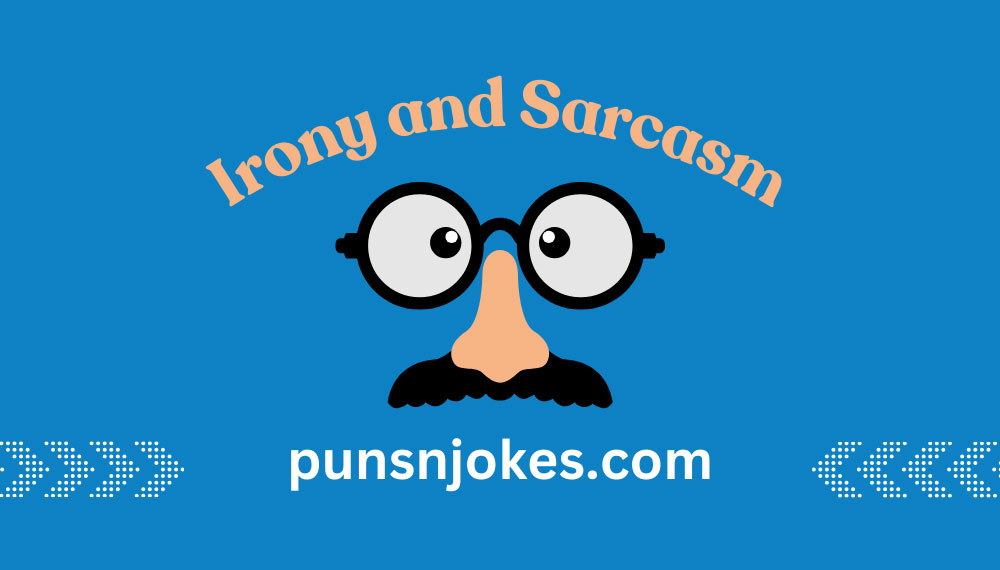
Ah, irony and sarcasm – the sharp tools of wit that cut through the mundane. Delving into the realm of humor and social commentary, these linguistic devices add layers of depth to everyday conversations. From subtle jabs to cutting remarks, they challenge our perceptions and provoke thought in unexpected ways. As a writer who appreciates the power of words, I’ve always been fascinated by how irony and sarcasm can convey complex ideas with a touch of sharpness. In this article, I’ll explore how these forms of expression serve as both a shield and a sword in the arsenal of communication, leaving a lasting impact on those who wield them adeptly. Let’s unravel the intricate dance of irony and sarcasm, where words become weapons and laughter becomes the ultimate defense.
Unveiling the World of Irony and Sarcasm
Understanding the Essence of Wit
Delving into the realms of irony and sarcasm, I unravel the layers of these linguistic tools that enrich conversations with depth and complexity. Irony, with its subtle mockery, challenges conventional thinking, while sarcasm, dripping with sharpness, cuts through facades to reveal underlying truths.
Exploring the Depths of Sarcasm
In my exploration of sarcasm, I delve into its multifaceted nature—how it serves as a double-edged sword, inflicting wounds with caustic remarks yet often concealing genuine emotions beneath a veil of humor. Sarcasm, when wielded with finesse, navigates the thin line between humor and harsh critique, leaving indelible marks on the dynamics of communication.
The Relationship Between Irony and Sarcasm
Comprehending the Intersection
Navigating through the realm of irony and sarcasm reveals a complex interplay between these two linguistic devices. Irony thrives on saying the opposite of what is meant, intending to convey a deeper layer of meaning often contradictory to the surface message. On the other hand, sarcasm employs cutting remarks to mock or convey contempt, often using irony as a vehicle. Understanding the intersection between irony and sarcasm demands a keen awareness of linguistic subtleties and contextual cues.
Drawing Parallels and Contrasts
Drawing parallels between irony and sarcasm showcases their shared foundation in using language to convey sophisticated, often humorous, meanings. Both employ wit and cleverness to engage audiences, challenging them to decipher the true intent behind the communicated message. However, contrasting the two reveals distinct nuances; while irony often seeks to highlight incongruities or contradictions subtly, sarcasm is more direct and can carry a sharper, more biting tone. Recognizing the delicate balance between these two forms of wit is essential in appreciating their unique contributions to communication dynamics.
Delving into the Art of Sharp Wit
Crafting Irony in Communication
Crafting irony in communication involves skillfully using language to convey meanings that are subtly different from the literal interpretation. It’s about creating a contrast between what is said and what is meant, often to emphasize a point or highlight incongruities. Irony adds depth to communication by inviting the audience to dig beneath the surface and uncover the underlying message.
Mastering the Edge of Sarcasm
Mastering the edge of sarcasm requires a delicate balance between humor and criticism. Sarcasm is a form of verbal irony that aims to mock or ridicule through sharp remarks. It’s essential to understand the context and tone to ensure that sarcasm doesn’t overshadow the message intended. Sarcasm can be a powerful tool when used effectively, but it also carries the risk of alienating or offending the audience if not wielded with care.
Impact and Relevance in Modern Communication
Irony and sarcasm play crucial roles in modern communication, shaping the way we convey messages and engage with others. Let’s delve into how these forms of wit impact society and navigate the delicate balance between humor and offense.
Analyzing the Influence on Society
In today’s society, irony and sarcasm have become prevalent tools in communication, especially in digital interactions. Social media platforms, in particular, are breeding grounds for the use of irony and sarcasm to convey opinions and critique. The ability to craft witty remarks that carry deeper meanings allows individuals to engage with complex issues in a more accessible and entertaining manner. However, this form of communication can also lead to misunderstandings and misinterpretations if the audience fails to grasp the intended tone. As such, navigating the impact of irony and sarcasm on societal discourse requires a keen understanding of context and audience reception.
Navigating the Fine Line Between Humor and Offense
Balancing humor and offense is a tightrope act when utilizing sarcasm in communication. While sarcasm can add an element of wit and levity to interactions, it also holds the potential to offend or alienate individuals if misused. It is essential to gauge the audience’s receptiveness and the appropriateness of the context when employing sarcastic remarks. The fine line between eliciting laughter and causing offense underscores the importance of tact and sensitivity in wielding sarcasm effectively. By considering the nuances of humor and potential sensitivities, one can harness the power of sarcasm to engage audiences without crossing the boundaries of respect and civility.
Harnessing Irony and Sarcasm for Effective Expression
Exploring the ways in which irony and sarcasm can be used effectively is crucial in modern communication. Leveraging these sharp forms of wit allows me to engage with complex topics in a captivating manner. When crafting my messages with irony and sarcasm, I aim to strike a balance between humor and offense. It’s essential to be mindful of the fine line between being humorous and being disrespectful.
In my interactions, I use irony to convey deeper meanings by employing contradictions subtly. By incorporating irony into my communication, I add layers of complexity that encourage critical thinking. Sarcasm, on the other hand, offers me a tool to inject humor into discussions while highlighting discrepancies or absurdities. However, I always ensure that my sarcasm is delivered with tact and sensitivity to avoid causing unintended offense.
In the digital age, where text-based communication is prevalent, mastering the art of irony and sarcasm is more important than ever. These forms of expression shape my online interactions, enabling me to share opinions and insights in a nuanced and engaging manner. Understanding the nuances of sarcasm allows me to navigate sensitive topics with finesse while maintaining a respectful discourse.
Harnessing irony and sarcasm effectively requires a deep understanding of the audience reception. By being aware of the diverse perspectives and sensitivities of my audience, I can tailor my ironic and sarcastic remarks to resonate positively. Striking the right chord ensures that my messages are well-received and contribute to meaningful conversations without causing inadvertent offense.
Mastering the use of irony and sarcasm in communication demands a delicate balance between wit and sensitivity. By carefully employing these tools, I can enrich my interactions, spark thought-provoking discussions, and navigate the complexities of modern discourse with finesse and effectiveness.
Conclusion
Exploring the nuances of irony and sarcasm reveals their power in communication. Understanding their impact on engagement and discourse is key. Leveraging these tools effectively requires finesse and awareness. Mastering irony and sarcasm enriches interactions and enhances digital communication.
